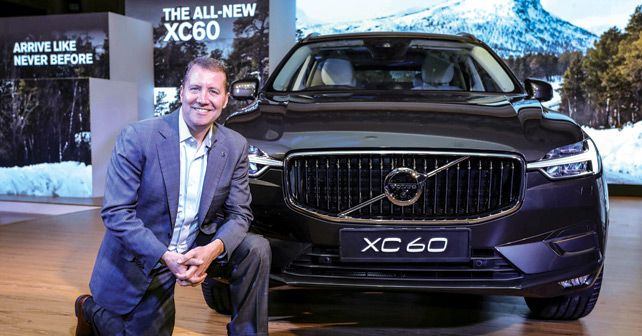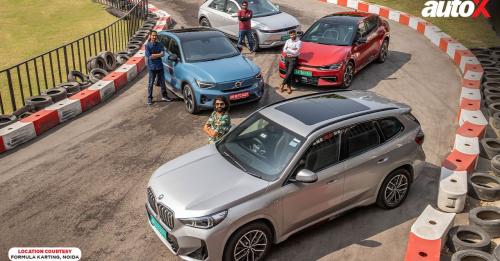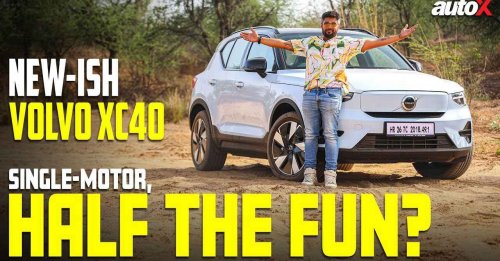
We sat down with Charles Frump, Managing Director, Volvo Car India, to get a sense of how Volvo plans to take on the German luxury car establishment in India.
Late last year, you announced your goal to double market share in the luxury car segment. How’s that going?
Good, I think we have the tools in place to do that. We want to have about 10% market share by 2020. We had about 5% last year. The way the trends are going currently, it seems like we’re on track. Entering a new segment with the new XC40 will really help us. We haven’t competed in that segment before, so that’ll give us a good boost. SUVs are the hottest selling products in the luxury segment right now, and we have the freshest line-up in India.
How can you make a dent in the German luxury car establishment?
One the key things that we really need to do is differentiate our brand. The real advantage that Volvo has is that we’re from Sweden. I think the way we approach the business, design our cars and dealerships gives us a clear choice from the Germans. There are many customers out there who have tried German luxury cars, they might be looking at something different – and so they’re looking to us. That unique positioning will really be an advantage for us going forward.
Every company is looking to increase localisation. What is Volvo India’s plan for the future in this regard?
We just opened our factory in October, and already last month we added the S90 to the line-up. So, now we’re locally assembling two cars in India. What we’re trying to look at is to bring the Scalable Platform Architecture (SPA) to local assembly, and then we’ll possibly look at CMA vehicles after that. Our strategy right now is to get more of our line-up into Bangalore and into local assembly.
Are you looking at sourcing parts locally too in future?
Yes, that’s something that we’re considering at the moment. But, as of now, rather than sourcing parts locally, it’s more about local assembly. Once we can get more cars being built here we can look at more localisation.
What are the challenges in the Indian luxury car market?
In any automotive market there are challenges. We have very strong competitors, and this is not an easy business. It takes a lot of focus and great partners to be able to achieve the success that we’ve had so far. I think that we’re a young company. We’ve only been a sales company for about 7-8 years, so we’re still growing – not just as an organisation, but also in terms of dealerships. Getting the people and processes in place has been a challenge, but now we’re very happy to see that things are really coming together and that we’re able to take fantastic care of our customers.
Where does India fit in Volvo’s electrified future?
I think we should take a step back and look at Volvo’s ambition. We see the future as an electrified one. We’ve made commitments and our vision is to have a million electrified vehicles on the road by 2025. We’re getting our product portfolio in line to do this. By 2019, every new car we launch will be electrified. In India, though, this will depend on how much time it takes to bring the 2019 cars here. Either way, the new cars to be launched in India post 2029 have to be electrified and that’s all that Volvo will be making.
Does it bother you that we don’t have a definitive EV policy in place as yet?
It’s actually quite a good situation in India. We have heard the government go out and say, by 2030, we want to be fully electrified. Their intentions are clear and, more importantly, they are in line with ours. We are all-in on electric and so is India.
But, for that to happen, the government needs to lay out a roadmap. We, at Volvo, think that the path to full electrification leads through plug-in hybrids. For us, we would like to see a roadmap that includes plug-in hybrids because it’s going to take a while before you get the infrastructure. And, in the meantime, we have fantastic technology in the form of plug-in hybrids that we can roll out.
Already, there are a lot of passionate customers who are driving our XC90 T8 plug-in hybrids. I drive one myself. I live in Delhi and drive to Gurgaon. Every night, I charge it and drive to work and as an electric. It’s months before I fill up my tank. I’m driving fully-electric in India today.
Moving from electric to performance cars, are we likely to see the high-performance Polestar brand in India anytime soon?
Polestar has now become a fully owned Volvo company. I’ve worked very closely with Thomas Ingenlath, the CEO of Polestar, and he’s still mapping out the exact vision for the brand and how it’s going to be rolled out. There will be good news to come, but not today.
Volvo has always been a pioneer in safety. Globally, you’ve announced that no one will be injured or killed in a Volvo by 2020. How does India fit into it this scenario?
This is not a new promise. We’ve been saying this for many years. Having worked in Sweden for a long time, I know this is tracked at a very deep statistical level and we’ve been trending towards this goal very consistently. I think it’s quite brave as a company to say that, as we get closer to 2020, this is something that we’re serious about – and it’s inclusive of India. The day that accidents end, and the day that we have no one killed or seriously injured in a Volvo, it’ll be a great day – not just for the company, but for humanity as a whole.























Write your Comment